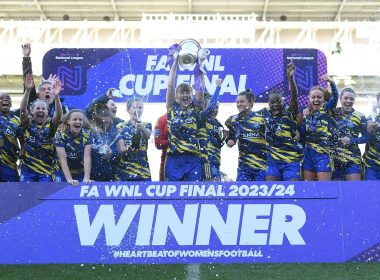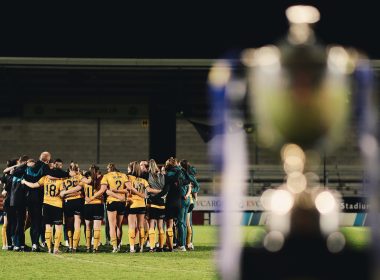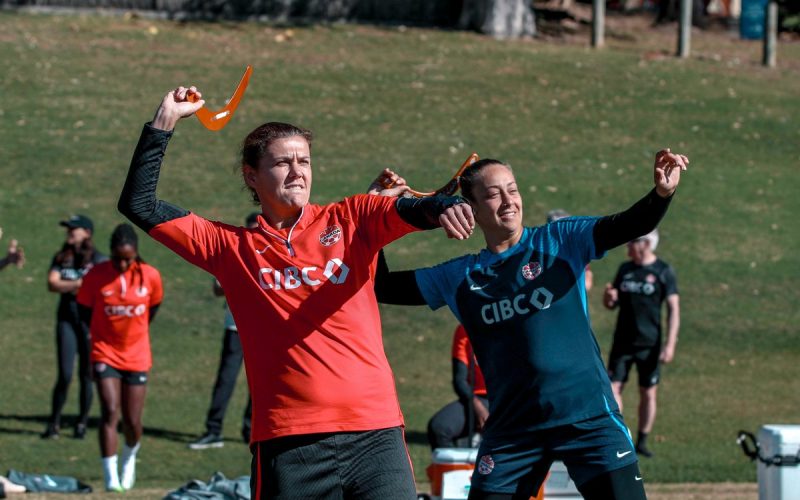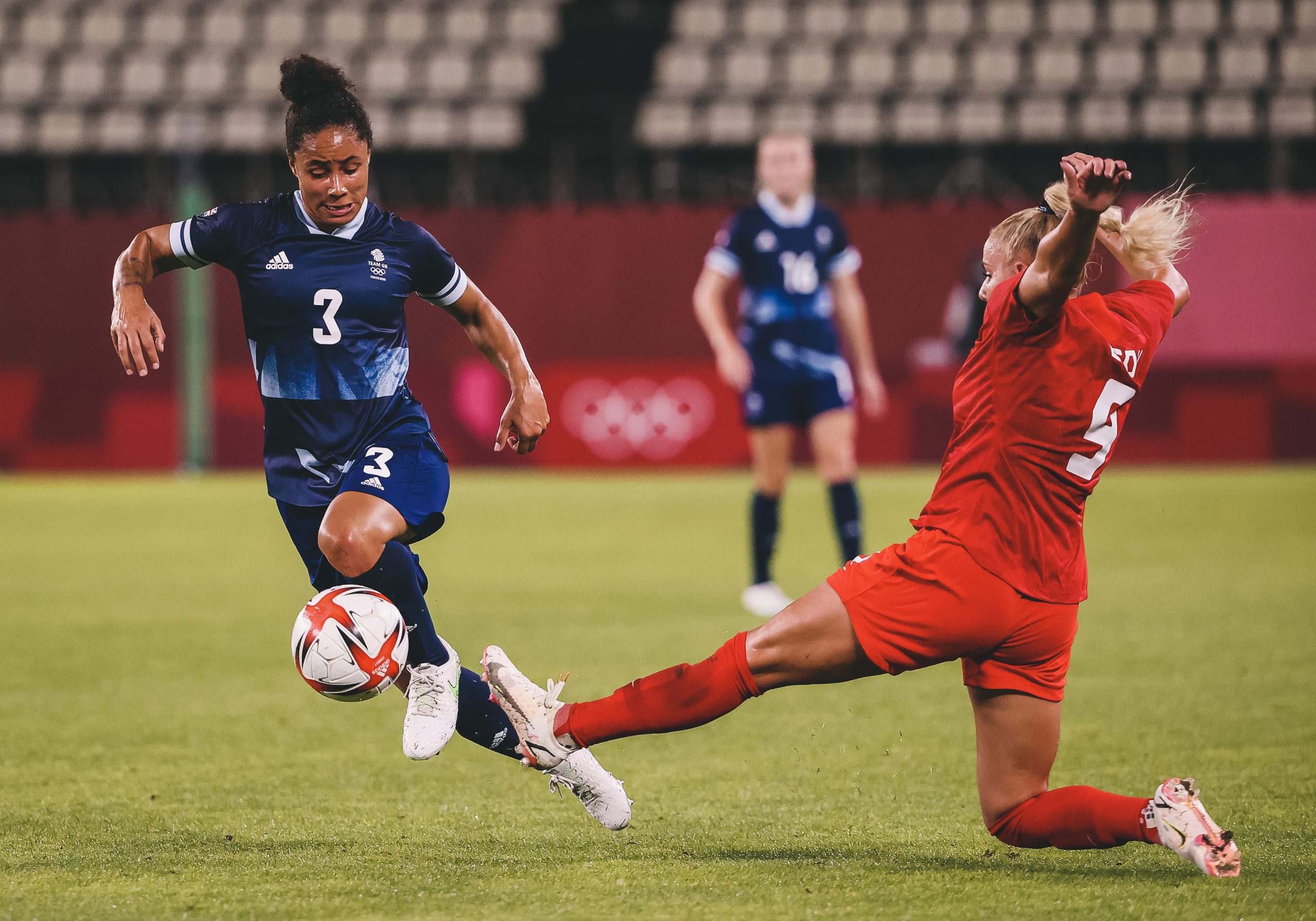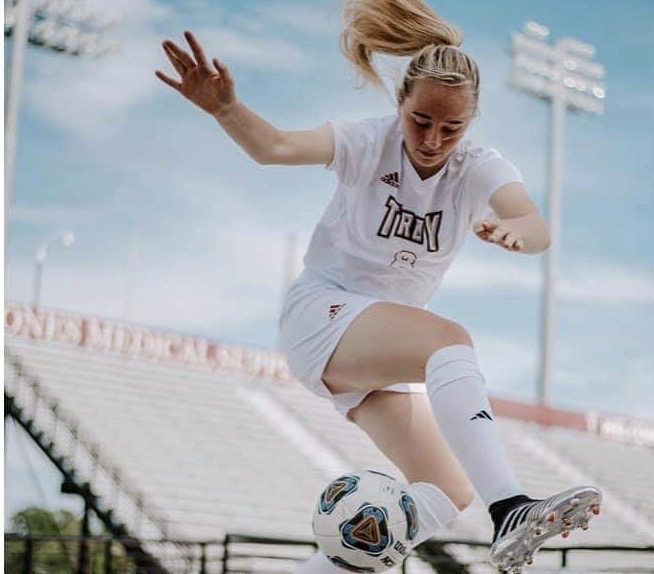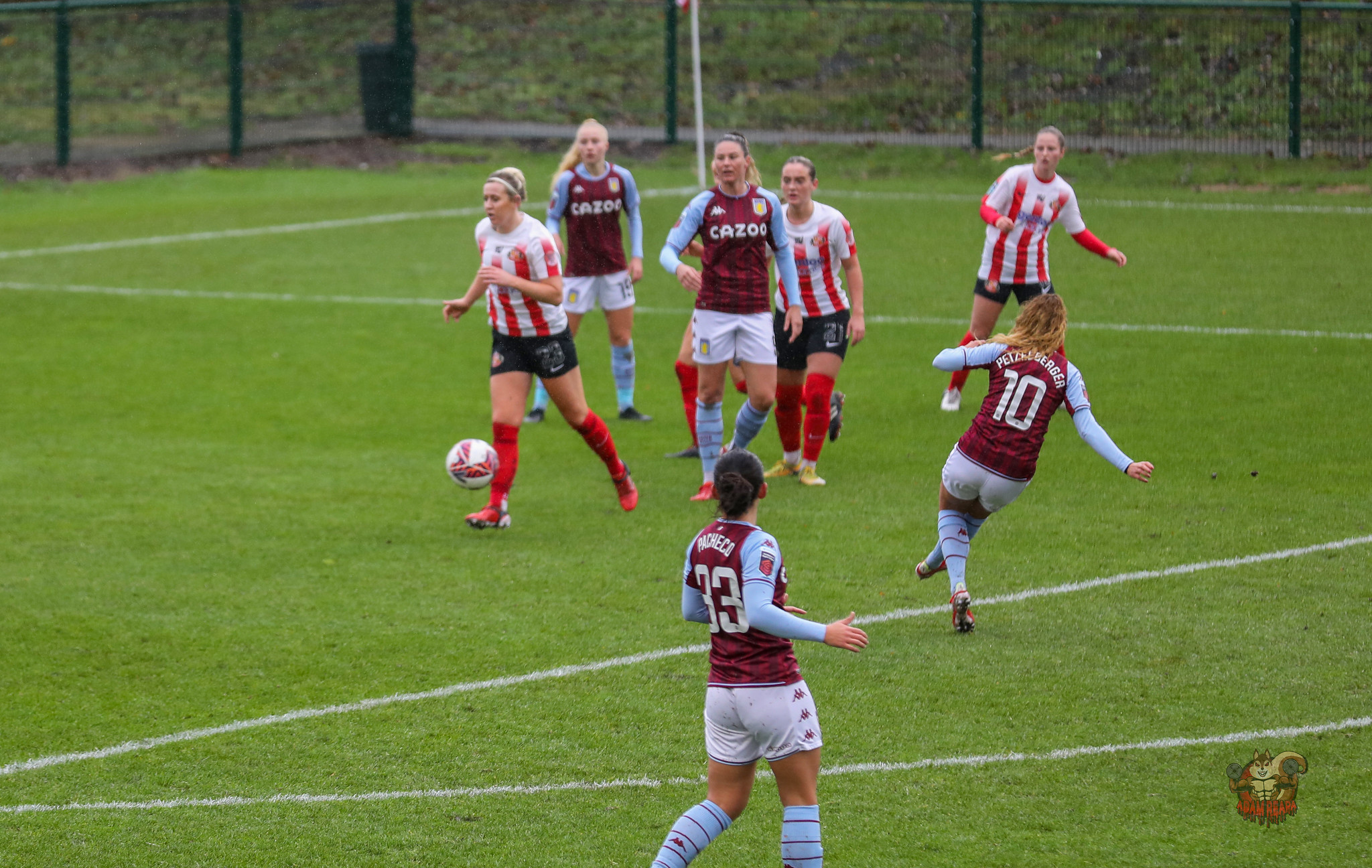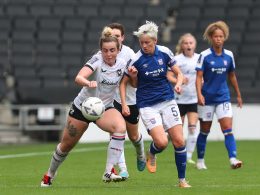As Since 71 looks at the teams of the Women’s World Cup, Paul Wheeler takes a look at Canada – the sprawling half-continent and arguably the true power in North America – one whose quiet excellence often gets hidden behind the bluster of their southern neighbours the US – to the rest of the world’s peril this summer.
They felt themselves at the exact centre of the country’s heart – the meeting place of ships, railroads and people. The point at which all the interlocking directorates of Canada found their balance…I’ve never seen anything more beautiful.
Hugh McLennan: “Two Solitudes”.
Canada, you feel, have always had something of a raw deal. With the continent they’re on bearing the name of their noisy neighbours to the south, and the natural quiet modesty of the Canadian temperament at absolute odds with the brash, confident yelling of those same neighbours, they have quietly moved along through history – a nation of multiple cultural identities that has never quite known what “Canadian” is – is it the pride of the First Nations populations who have been horrendously treated by both Anglo- and French colonisers alike, the “Anglo-Canadian” side influenced by British and Irish who colonised the East Coast and dominate most of the biggest cities, or the proud French-Canadians in Québec?
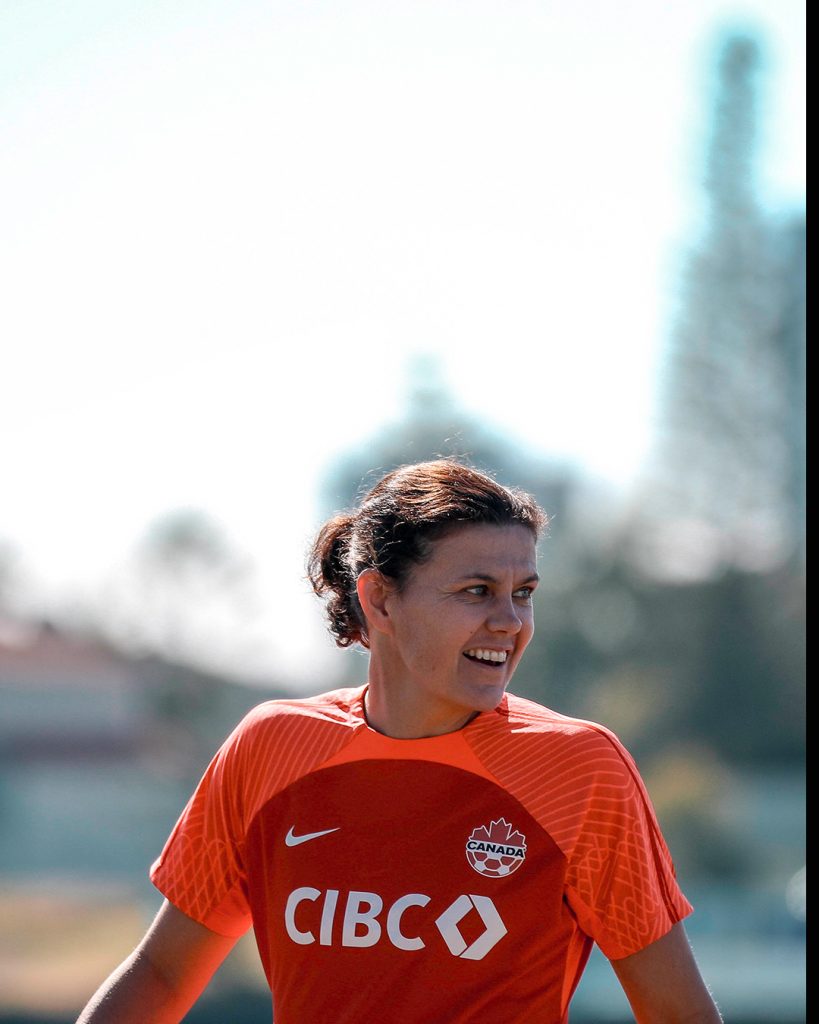
Even within these three, there are further subdivisions – Is it the hard-driving provinces of Ontario, the nation’s traditional economic powerhouse existing uneasily alongside the proud French enclave of Québec, the naval tradition of the Maritimes and Newfoundland, the Eastern European settlers and hard bitten cynicism of the farmers of the wide-open, isolated plains of the prairies of Saskatchewan and Manitoba, the hardscrabble no-nonsense grit of Alberta with its warring cities of Calgary and Edmonton that in some ways emulates the old West of the USA, or the more-relaxed but also mountainous West Coast?
More than many other nations, Canada’s sheer size (for context, if you overlay Europe over it Victoria, BC (the most western provincial capital in Canada) is roughly level with Dublin, Ireland, and the most eastern capital, St John’s Newfoundland, is roughly level with Tehran, Iran) means that it is a country of many different cultures even amongst those of the same background. It has two official languages that need to be taken into account when forming teams (the Canada WNT has native French-and-Anglophone speakers and many in Canada speak both without even thinking about it).
Football (sorry, North Americans, I’m English. I refuse to call it “soccer” is a sport in Canada that has only relatively recently taken prominence – unlike most European nations or the USA there is no women’s pro league in Canada even now. The first international ever played by a Canadian women’s team took place in 1986 – a two-nil loss to the US.
We in England love to discuss how women’s football is still relatively early in its development here but, to put that in context, when Canada played its first ever women’s international, the English women’s team, in its reincarnated form, had already played in seven international tournaments and been in existence for fifteen years. Christine Sinclair was already four years old when the team she would play for on her road to all time greatest international goalscorer was formed.
And this, perhaps, makes the rise of the Canadian team to the point where they currently sit – as Olympic champions with some of the best players in the world and with a strong claim to be usurping the US’s throne as strongest team in North America – even more remarkable. The Canadian women’s team have got to where they are without the hype and money that has been ploughed into the American system since the 1999 Womens’ World Cup.
Whilst the US have grabbed the limelight and stolen a march on the rest of the world by being early adopters, the Canadians have fought through the often-unhospitable climate and even more inhospitable treatment by their nation’s FA and the status of being a second-tier sport in both attention and funding in their own country behind the Canadian religion that is ice-hockey to become a team with a legitimate shot at World Cup glory.
The 2021 Olympic championship was Canada’s coming of age – after a controversial loss to the US powerhouse due to refereeing in the 2012 Olympics and the strides made under the seven years of John Herdman, English coach Bev Priestman finally carried the Maple Leaf to victory at the Olympics, and with the USA in transition, now might finally be the moment Canada break the stranglehold of their US neighbours. There is a shift in power happening in North America.
So who are the players charged with carrying the Maple Leaf high in Australia this summer?
The Canadian goalkeeping corps is in a slight transition, with Kailen Sheridan now taking over as official starter after the retirement of Stephanie Labbé – a Canadian legend who shared goalkeeping duties with her fellow legendary goalie Erin McLeod for over a decade. Sheridan is likely the starter, but D’Angelo will be pushing hard to take her spot – Proulx is very much the third goalie here and if she’s playing then Canada are having either injury issues, really struggling or, they’ll hope, already comfortably assured of qualification from the group stages. Sheridan is an agile shotstopper who can pull off spectacular stops – D’Angelo has acquitted herself well in the WSL since joining Arsenal, too.
| Squad number | Name (pronunciation) | Hometown | Club |
| #1 | Kailen Sheridan (Kay-len) | Whitby, Ontario | San Diego (NWSL) |
| #18 | Sabrina D’Angelo (dangelo) | Welland, Ontario | Arsenal (WSL) |
| #22 | Lysianne Proulx (lee-zee-anne prew) | Boucherville, Quebec | SCU Torrense |
Defensively, the Canadians are stacked with experience and quality. Kadeisha Buchanan came to Chelsea with the reputation of one of the best centre-backs in the world, though sh has perhaps not hit those heights in London. Shelina Zadorsky is also strong and steady but it’s in the fullback positions where Canada have a frightening talent – Jayde Riviere and Ashley Lawrence are both electric and Vanessa Gilles, Allysha Chapman and Gaby Carle are more than able backups.
There’s not really a weak spot here and they will be very tough to beat…there’s a lot of hype around the US fullbacks but the Canadians, in my opinion, are better.
| Squad number | Name (pronunciation) | Hometown | Club |
| 2 | Allysha Chapman | Courtice, Ontario | Houston Dash (NWSL) |
| 3 | Kadeisha Buchanan (kad-ee-sha) | Brampton, Ontario | Chelsea (WSL) |
| 4 | Shelina Zadorsky | Kitchener, Ontario | Tottenham (WSL) |
| 8 | Jayde Riviere | Markham, Ontario | Manchester United (WSL) |
| 10 | Ashley Lawrence | Caledon East, Ontario | Chelsea (WSL) |
| 14 | Vanessa Gilles | Ottawa, Ontario | Olympique Lyonnais (France) |
| 16 | Gabrielle Carle | Lévis, Quebec | Washington Spirit (NWSL) |
The Canadian midfield looks sparse in terms of squad numbers, but that’s because a lot of the wide midfielders are more wide forwards or playing just off the front line. Grosso and Schmidt are box-to-box workhorses, Jessie Fleming can chip in with killer passes and goals and Simi Awujo is an exciting young talent but the name that catches the eye is Quinn – a solid and effective tough-tackling defensive midfielder on the pitch, and a true trailblazer off it. They came out as non-binary in 2020, changing their given name and using their surname as a mononym to better reflect their identity, and then made history at the Olympics in 2021 as the first non-binary athlete at the Olympics to win a gold medal. They have been a loud and passionate campaigner for respect for non-binary people in sport – something exemplified by the Canadian FA now including every player’s pronouns in the squad announcements.
| Squad number | Name | Hometown | Club |
| 5 | Quinn | Toronto, Ontario | OL Reign (NWSL) |
| 7 | Julia Grosso | Vancouver, British Columbia | Juventus (Serie A) |
| 13 | Sophie Schmidt | Abbotsford, British Columbia | Houston Dash (NWSL) |
| 17 | Jessie Fleming | London, Ontario | Chelsea (WSL) |
| 21 | Simi Awujo | Atlanta, USA | USC (NCAA) |
The Canadian attack is, to put it mildly, one of the best at the World Cup. Once again, we turn to comparison with the US attack and whilst the US attack might have the star names, the Canadian attack has the depth the US wish they had. Even missing ACL-injury victim Janine Beckie, the mix of experience and youth here means that whoever is on the pitch for Canada will be dangerous.
With the all-time highest scorer in international football in Christine Sinclair – a wily veteran with a knowledge of the dark arts of centre-forward play and the lethal cunning of a fox to her heir apparent Jordyn Huitema up the middle, and the speed, versatility and skills of Cloé Lacasse, Evelyne Viens and the criminally-underused-by-her-club Adriana Leon, there is talent everywhere, and that’s without the quiet menace of Deanne Rose and the exciting raw talent of Olivia Smith, Canada’s youngest-ever senior debutant.
| 6 | Deanne Rose | Alliston, Ontario | Reading (WSL) |
| 9 | Jordyn Huitema (jor-dan hy-tem-a) | Chilliwack, British Columbia | OL Reign (NWSL) |
| 11 | Evelyne Viens (ev-el-een vee-an) | L’Ancienne-Lorette, Quebec | Kristianstad (SEL) |
| 12 | Christine Sinclair | Burnaby, British Columbia | Portland Thorns (NWSL) |
| 15 | Nichelle Prince | Ajax, Ontario | Houston Dash |
| 19 | Adriana Leon | King City, Ontario | Manchester United (WSL) |
| 20 | Cloé Lacasse | Sudbury, Ontario | Arsenal (NWSL) |
| 23 | Olivia Smith | Whitby, Ontario | Penn State Nittany Lions (NCAA) |
Prospective Lineup
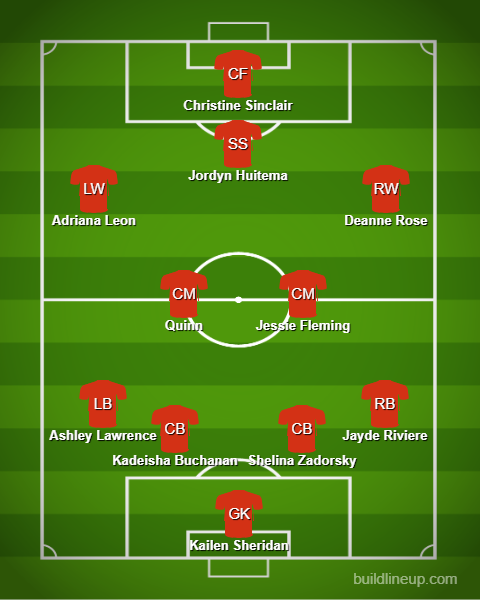
The main question over Canada’s selection will likely be on the wings, particularly the right side of their attack – Adriana Leon can play either side but tends to play on the left – which is a side Canada are abundant with Cloé Lacasse also having an excellent season and looking to force her way into the team, so Leon could switch to the right, as could Evelyne Viens if Bev Priestman isn’t 100% happy with throwing Deanne Rose straight into the action.
The midfield could also see any two from five – I’ve gone with Quinn to provide the steel in front of the back four and allow Lawrence and Riviere to get forward, while Jessie Fleming is equally comfortable at either end. Christine Sinclair and Jordyn Huitema have seemingly been the strike partnership of choice and both love to rotate as the spearhead to find space while being lethal in the box. Zadorsky, Buchanan and Vanessa Gilles could be battling for that CB spot also, but I’ve gone with what I think is likely Canada’s strongest, most used lineup if all players are fit.
Prediction – Canada are one of my dark horses for the World Cup title, but they have a route to the final that will certainly test them, with the pace and power of Nigeria’s Super Eagles, the stubborn resistance of the Republic of Ireland and home nation Australia standing in their way just in the group stages – and it doesn’t get any easier from there. Qualification may come down to the game with Nigeria, their closest rivals. A good result against the Super Eagles is key to put them on the front foot, particularly with Australia fired up for their home World Cup,
The Canadians will be forced to go through the fire and may well be overlooked as serious title threats because of this – but these women have been used to achieving against the odds all their careers. Their fellow countrymen the Rheostatics once wrote of “Dope Fiends and Boozehounds” and some would say only similarly sensory-impaired folk would pick them as World Cup winners, but like Canadian icons the Tragically Hip wrote in their iconic song “Ahead by a Century” – “With revenge and doubt, tonight, we smoked them out”.
With the twin motivations of revenge against the USA for all those times they’ve come so close but been overlooked, and the doubt of others, the Canadians have all they need to go far.
I’m picking them as getting to the semi-finals. From there, anything could happen. But this team’s trophy drought will still probably end before the Toronto Maple Leafs win a Stanley Cup – why not this summer?



